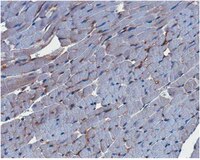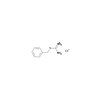Tissue-restricted expression of thrombomodulin in the placenta rescues thrombomodulin-deficient mice from early lethality and reveals a secondary developmental block.
Isermann, B; Hendrickson, SB; Hutley, K; Wing, M; Weiler, H
Development (Cambridge, England)
128
827-38
2001
요약 표시
The endothelial cell surface receptor thrombomodulin (TM) inhibits blood coagulation by forming a complex with thrombin, which then converts protein C into the natural anticoagulant, activated protein C. In mice, a loss of TM function causes embryonic lethality at day 8.5 p.c. (post coitum) before establishment of a functional cardiovascular system. At this developmental stage, TM is expressed in the developing vasculature of the embryo proper, as well as in non-endothelial cells of the early placenta, giant trophoblast and parietal endoderm. Here, we show that reconstitution of TM expression in extraembryonic tissue by aggregation of tetraploid wild-type embryos with TM-null embryonic stem cells rescues TM-null embryos from early lethality. TM-null tetraploid embryos develop normally during midgestation, but encounter a secondary developmental block between days 12.5 and 16.5 p.c. Embryos lacking TM develop lethal consumptive coagulopathy during this period, and no live embryos are retrieved at term. Morphogenesis of embryonic blood vessels and other organs appears normal before E15. These findings demonstrate a dual role of TM in development, and that a loss of TM function disrupts mouse embryogenesis at two different stages. These two functions of TM are exerted in two distinct tissues: expression of TM in non-endothelial extraembryonic tissues is required for proper function of the early placenta, while the absence of TM from embryonic blood vessel endothelium causes lethal consumptive coagulopathy. | 11222138
 |
Structure-function analyses of thrombomodulin by gene-targeting in mice: the cytoplasmic domain is not required for normal fetal development.
Conway, EM; Pollefeyt, S; Cornelissen, J; DeBaere, I; Steiner-Mosonyi, M; Weitz, JI; Weiler-Guettler, H; Carmeliet, P; Collen, D
Blood
93
3442-50
1999
요약 표시
Thrombomodulin (TM) is a widely expressed glycoprotein receptor that plays a physiologically important role in maintaining normal hemostatic balance postnatally. Inactivation of the TM gene in mice results in embryonic lethality without thrombosis, suggesting that structures of TM not recognized to be involved in coagulation might be critical for normal fetal development. Therefore, the in vivo role of the cytoplasmic domain of TM was studied by using homologous recombination in ES cells to create mice that lack this region of TM (TMcyt/cyt). Cross-breeding of F1 TMwt/cyt mice (1 wild-type and 1 mutant allele) resulted in more than 300 healthy offspring with a normal Mendelian inheritance pattern of 25.7% TMwt/wt, 46.6% TMwt/cyt, and 27.7% TMcyt/cyt mice, indicating that the tail of TM is not necessary for normal fetal development. Phenotypic analyses showed that the TMcyt/cyt mice responded identically to their wild-type littermates after procoagulant, proinflammatory, and skin wound challenges. Plasma levels of plasminogen, plasminogen activator inhibitor 1 (PAI-1), and alpha2-antiplasmin were unaltered, but plasmin:alpha2-antiplasmin (PAP) levels were significantly lower in TMcyt/cyt mice than in TMwt/wt mice (0.46 +/- 0.2 and 1.99 +/- 0.1 ng/mL, respectively; P <.001). Tissue levels of TM antigen were also unaffected. However, functional levels of plasma TM in the TMcyt/cyt mice, as measured by thrombin-dependent activation of protein C, were significantly increased (P <.001). This supported the hypothesis that suppression in PAP levels may be due to augmented activation of thrombin-activatable fibrinolysis inhibitor (TAFI), with resultant inhibition of plasmin generation. In conclusion, these studies exclude the cytoplasmic domain of TM from playing a role in the early embryonic lethality of TM-null mice and support its function in regulating plasmin generation in plasma. | 10233896
 |
Externalization of tropomyosin isoform 5 in colon epithelial cells.
Kesari, KV; Yoshizaki, N; Geng, X; Lin, JJ; Das, KM
Clinical and experimental immunology
118
219-27
1999
요약 표시
Ulcerative colitis (UC) is associated with autoantibody response to a cytoskeletal protein, human tropomyosin (hTM) isoform-5 (hTM5). Because hTM5 is an intracellular protein, it may remain inaccessible to the autoantibodies. Therefore, we have investigated the possibility of externalization of hTM5 in colon epithelial cells. Freshly isolated colonic and small intestinal epithelial cells and LS-180 colon cancer cell line were examined for surface expression of hTM5 by flow cytometric analysis using hTM isoform-specific MoAbs. The extracellular release of hTM5 was determined by Western blot and radioimmunoprecipitation analyses. Physical association of hTM5 with a membrane-associated colon epithelial protein (CEP) was examined by co-immunoprecipitation of hTM5 with anti-CEP MoAb, and CEP with anti-hTM5 MoAb. Cell surface expression of hTM5 was observed in colonic epithelial and LS-180 cells but not in small intestinal epithelial cells. LS-180 cells spontaneously released hTM5 as well as CEP into the culture medium that was significantly stimulated by a calcium ionophore, A23187, but inhibited by phorbol-12-myristate-13-acetate, monensin and methylamine. Co-immunoprecipitation experiments revealed that hTM5 forms a complex with CEP. We conclude that hTM5 is externalized in colon but not in small intestinal epithelial cells. The physical association of hTM5 with CEP suggests a possible chaperone function of CEP in the transport of hTM5, a putative target autoantigen in UC. | 10540182
 |
Targeting of transgene expression to the vascular endothelium of mice by homologous recombination at the thrombomodulin locus.
Weiler-Guettler, H; Aird, WC; Husain, M; Rayburn, H; Rosenberg, RD
Circulation research
78
180-7
1996
요약 표시
We describe a straightforward gene-targeting technique to achieve uniform, stable, and genetically invariant expression of a transgene in the vascular endothelium of mice. To demonstrate the feasibility of this approach, the reporter gene bacterial beta-galactosidase was inserted via homologous recombination into the intronless thrombomodulin locus of murine embryonic stem cells. In this fashion, the lacZ gene is placed under the regulatory control of the endogenous thrombomodulin promoter. The expression of the transgene in adult mice recapitulated the widespread, stable, and high-level expression of the thrombomodulin gene in vascular endothelium. These data indicate that targeting of cDNAs into the thrombomodulin locus serves as a viable strategy to express transgenes in endothelial cells. Analysis of reporter gene expression revealed a heterogeneous pattern of thrombomodulin gene activity in the endothelium of the aorta and its tributaries. We also show that embryonic stem cells with a targeted thrombomodulin locus contribute in a mosaic fashion to the vascular endothelium of chimeric mice. This method for generating animals with a functionally heterogeneous cardiovascular system should provide an experimental technique for studying how localized genetic abnormalities in endothelial cell function lead to the development of vascular diseases. | 8575060
 |
Thrombomodulin is preferentially expressed in Balb/c lung microvessels.
Ford, VA; Stringer, C; Kennel, SJ
The Journal of biological chemistry
267
5446-50
1992
요약 표시
Previously, two rat monoclonal antibodies where developed which bind distinct epitopes on a murine glycoprotein, P112, which is expressed primarily in lung capillary endothelium. In this paper we show that P112 is identical to the endothelial anticoagulant protein, thrombomodulin (TM). Several lines of evidence support this conclusion. First, amino acid analysis of P112 shows a high degree of homology to TM, and both molecules exhibit the same mobility in gel electrophoresis. Second, P112 and TM share reactivity for two different monoclonal antibodies. Third, purified P112, like TM, acts as a cofactor for protein C activation. Finally, two cDNA clones identified with P112 polyclonal antiserum contain sequence identity with the known TM cDNA sequence. Quantitative analysis of TM (P112) expression using a two-site monoclonal antibody assay demonstrates that significantly higher levels of TM are found in lung in comparison with other highly vascularized organs, i.e. the kidney and liver. Quantitative Northern blot data coincides with the two-site assay data and demonstrates that the high level of TM expression in lung is not due to preferential binding of the monoclonal antibodies to lung TM but rather to increased production of TM mRNA in the lung relative to other highly vascularized organs. It is suggested that expression of TM is highest in cells from continuous endothelium. | 1372003
 |
Quantitation of a murine lung endothelial cell protein, P112, with a double monoclonal antibody assay.
Kennel, SJ; Lankford, T; Hughes, B; Hotchkiss, JA
Laboratory investigation; a journal of technical methods and pathology
59
692-701
1988
요약 표시
Two monoclonal antibodies (MoAb) have been isolated from two different F344 rats immunized with normal BALB/c mouse lung homogenates. The MoAbs 273-34A and 411-201B demonstrate similar staining properties when used in immunohistochemistry and have been shown to bind to endothelial cells in the lung using immunogold electron microscopy. Radiolabeled MoAb 273-34A injected intravenously localizes rapidly to lung. Ratios of MoAb to control and values for percentage of recovered dose/gram are 50-fold higher in lung than in other organs. Both MoAbs recognize the same 112 kilodalton protein (P112) on the surface of lung cells in culture but do not compete for binding with each other. Both antibodies can be used to purify P112 from normal mouse lung homogenate using immunoaffinity chromatography. These MoAb have been used in a two-site, quantitative assay for P112. Data show that normal lung contains high amounts of P112 (500 to 700 ng/mg P), whereas other organs have low (spleen, uterus) or undetectable (liver) levels of P112. We conclude that endothelial cells in different organs are not identical and that P112 is preferentially expressed in lung endothelial cells. Quantitation of P112 may be useful to assess the role of endothelial cells in toxic injury, lung diseases, and growth and vascularization of lung tumors. | 2460698
 |
Rat monoclonal antibodies to mouse lung components for analysis of fibrosis.
Kennel, SJ; Hotchkiss, JA; Rorvik, MC; Allison, DP; Foote, LJ
Experimental and molecular pathology
47
110-24
1987
요약 표시
Six rat monoclonal antibodies to mouse lung membrane fraction have been characterized. Each has unique binding properties and can be used to stain particular lung components in paraffin sections. One antibody, 133-13A, recognizes a 100-kDa glycoprotein on lung tumor cells, but stains only macrophage-like cells in normal or fibrotic lung sections as determined by immunogold electron microscopy. The monoclonal antibody 273-34A binds to a 112-kDa protein on the surface of normal mouse lung fibroblasts. Immunogold electron microscopy demonstrates antibody binding to capillary endothelial cells, but not to fibroblasts. Type I, or Type II cells. Staining of fibrotic sections with MoAb 273-34A is dramatically enhanced over staining of normal lung. A third antibody, 370-8A, gives a general staining pattern throughout normal lung that is intensified in fibrotic lung. Another MoAb 328-41A mediates intense nuclear fluorescence of lung tumor cells and cells in lung sections. It binds to 14- and 17-kDa proteins that may be high mobility group (HMG) nuclear proteins. Enzyme inhibition studies and immunofluorescence staining patterns on normal lung indicate that elastin may be the target of MoAb 328-35B. MoAb 327-5B binds to normal mouse lung fibroblasts and red blood cell membranes. These last three MoAbs stain macrophages in fibrotic lung, but give a general pattern of light epithelial cell stain in normal lung sections indicating macrophage engulfment of the normal cell antigen during fibrosis. These antibodies should be useful in identifying cell types and molecular mechanisms involved in early stages of fibrosis induced by different chemical insults. | 2440715
 |




















